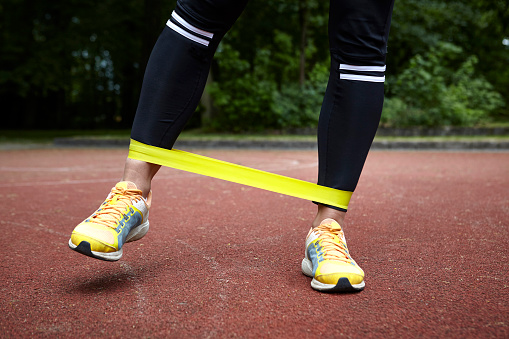InsideWAIS Strength and Conditioning – Resistance Band
The resistance band has become an increasingly common part of the high performance sport environment in recent years.
Bands come in various shapes and sizes and will typically offer different levels of resistance based on the purpose required.
Generally speaking, the range of benefits include; being light weight, easy to store and transport but most importantly, they represent a useful tool for assisting muscle activation.
At WAIS, athletes from swimming, rowing, water polo and track and field to name a few, will utilise resistance band exercises before commencing gym sessions.
Strength and Conditioning coach David Veli uses mini band walks at WAIS, as an exercise to fire up the stabilising muscles around the hip for the hockey athletes that he designs programs for.
“We use lateral band walks with our hockey program athletes to increase the strength and endurance of the muscles around the hip,” he explained.
“This helps with hip and knee joint stability and can reduce the risk of lower limb injury for athletes.”
The mechanics of the sport dictates that athletes spend an extended period of time in a lowered or crouched position, be it dribbling the ball, defending an attacker or executing penalty corners.
Over time, this can lead to wear and tear on the joints. At the elite level, strength and conditioning becomes a key component in the strategy against losing athletes to injury.
“We would dedicate around two minutes at the start of a weights session using a mini band, Veli said.
“We pick a challenging resistance to complete 15-25 reps on each side in one set. We usually progress the reps from 15 to 25, then increase the resistance with either a larger step or stronger band. I aim to progress each session to ensure athletes are being challenged,” he said.
Whilst resistance bands are inexpensive and easily accessible, Veli said there are other exercises that can be used if you find yourself without one.
“If you don’t have one at hand, you can try side lying clams or abductions, which are both good to target the stabilising muscle around the hip.”
InsideWAIS S&C Tip:
David Veli: Try starting in a quarter squat position with the band just above your ankles. If this is too challenging, you can start with the band just above the knee. Focus on controlled movements, keeping your knees over your toes as you step. Using a mirror can help with this when starting out.

